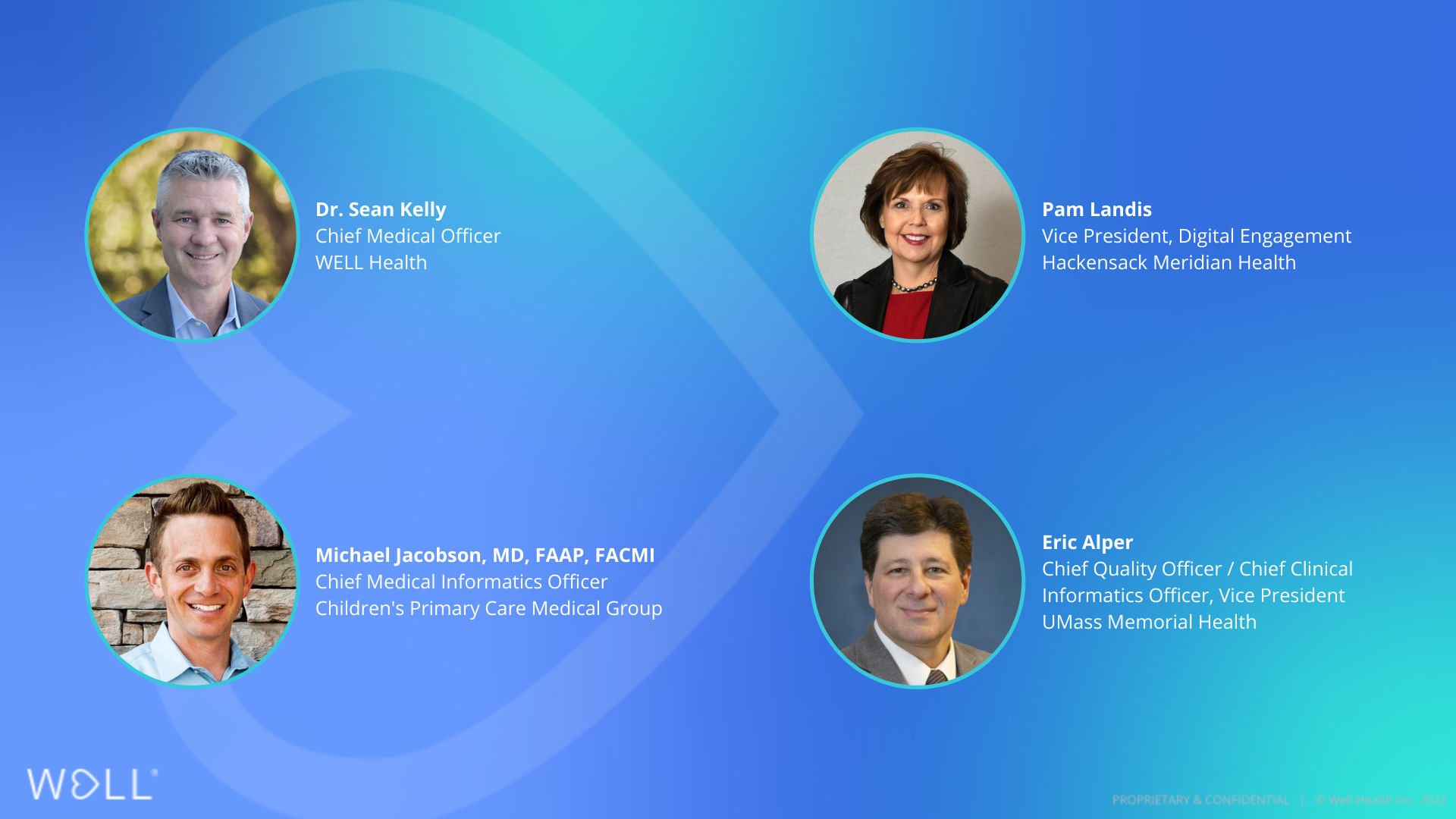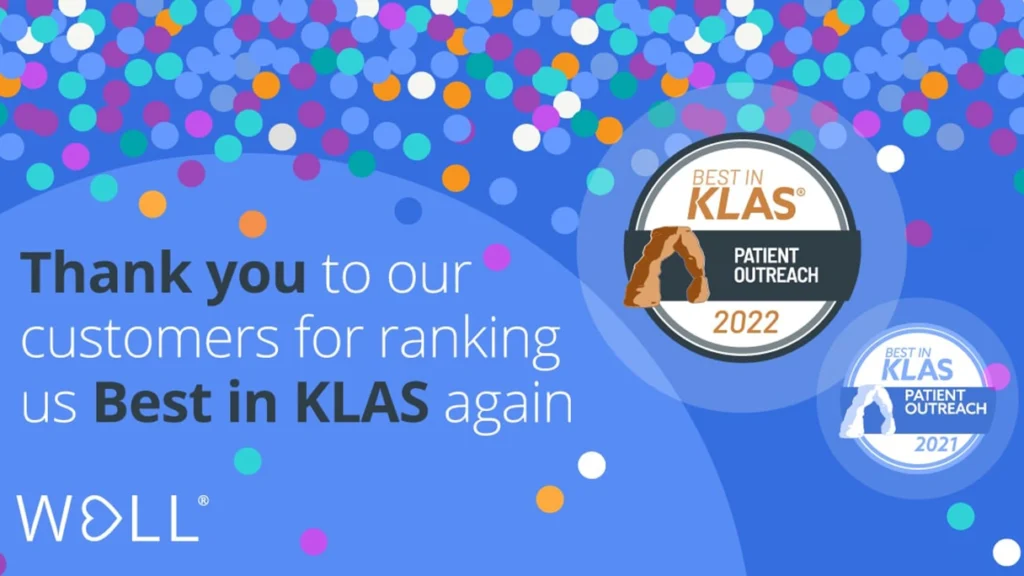
In a recent discussion with three healthcare leaders, Dr. Sean Kelly, Chief Medical Officer of Artera, confirmed that patient engagement is still top-of-mind.
- Michael Jacobson, MD, FAAP, FACMI, Chief Medical Informatics Officer at Children’s Primary Care Medical Group.
- Pamela Landis, Vice President of Digital Engagement at Hackensack Meridian Health.
- Eric Alper, Chief Quality Officer/Chief Clinical Informatics Officer and Vice President at UMass Memorial Health.
The experts discussed numerous topics, including patient communication challenges, healthcare consumerism in a digital world, patient engagement strategies, and more.
Top challenges healthcare leaders are facing
After reflecting on the digital environment we’ve all become so accustomed to – connecting virtually versus in-person – Dr. Kelly asked the panelists about the issues they are seeing in terms of patient communication as a result of the pandemic and beyond.
As each leader highlighted their organization’s top pain points, it became clear that patient no-shows, staffing issues, and gaps in care are consistent issues across the board.
Not surprisingly, the challenges these leaders are currently facing are consistent with other health organizations. In fact, they align quite well with current industry challenges – especially ones that continue to persist in light of COVID-19.
Meeting patients where they are is key to improving patient engagement
As the healthcare industry continues to evolve, so do the needs of patients. Providers must be willing to embrace emerging healthcare technologies to meet the growing demands of healthcare consumers. One way to do so is by implementing a patient engagement platform.
All three of the panelists’ organizations have taken that leap. A patient engagement solution not only allows them to connect with patients directly, but helps to address the numerous challenges that persist in the current healthcare landscape.
Each panelist had a chance to dive deeper into their thought process around this decision:
Dr. Jacobson’s first priority was finding a solution that could help with direct, effective communication with patients and their caregivers. As a primary care pediatric group, his organization primarily engages with a younger demographic and, therefore, technology users that are accustomed to “buying things on Amazon.” He needed a solution that was going to be more consumer-focused – one that provided frictionless patient-provider communication and conversational messaging.
Landis and Alper agreed with Dr. Jacobson, as they were searching for a solution that understood where consumers are and the technologies they use. They also needed a modern solution that was going to seamlessly integrate and scale with their existing legacy systems – and do the work that they needed it to do, quickly and efficiently.
Ultimately, it’s clear that all three leaders realize that in order to foster a better patient experience in today’s digital world, they must constantly adapt to meet patients where they are. By doing so, they are one step closer to bridging the gap between patients and providers, keeping patients involved in their care even when they’re not within the four walls of a hospital.
“At Hackensack Meridian Health, we are committed to bringing in smart, modern technology that can not only scale and integrate with our legacy systems, but more importantly, meet the needs of our customers where they are,” said Pamela Landis, vice president of Digital Engagement at Hackensack Meridian Health. “We’ve adopted Artera as the communications highway that sits on top of our digital platform because it delivers on both what our health system and patients need.”
Strategies to coordinate patient engagement efforts
Dr. Kelly acknowledged that while implementing new technologies can be an exciting process, it can also pose a few challenges. Trying to coordinate efforts with a number of different internal stakeholders, for example, can be quite overwhelming.
The panelists discussed how they orchestrate digital initiatives in their respective organizations, uncovering different approaches and tangible solutions to such processes.
Landis’ organization formed a digital patient engagement governance committee – an internal team of representatives from hospitals and practices who review strategy, discuss technologies, identify opportunities for digital communications, and much more. The committee also works together to highlight the value and benefits of such initiatives including fewer incoming calls, higher patient satisfaction scores, reduced no-shows, better NPS scores, and more.
Alper responded with a similar approach, working with his team to bubble up important initiatives through a digital decision-making process. The challenge he finds, however, is around prioritizing which technologies to roll out at certain times – in ways that are not taxing to patients and staff alike. It’s about finding a healthy balance – uncovering those with the greatest value and the least demand.
For Dr. Jacobson, it comes down to engaging directly with patients and caretakers to determine what kind of communication they want and how frequently they want it. His team looks to uncover the patient voice and then identify opportunities that align with their wishes to ultimately improve the patient experience.
How to measure patient engagement success
After implementing a patient engagement solution, it’s important to track your organization’s success. Dr. Kelly asked about the specific metrics and strategies that the leaders use to measure their own progress. Across the board, the panelists responded with these key factors:
- Response rates
- Abandon rates
- No-show rates
- Rescheduling & slot fills
- Patient satisfaction
- Provider satisfaction
- Star ratings
- Workflows
- Care gaps
Panelists also stressed that monitoring these key performance indicators is critical to confirm the health system is making progress against its objectives and identify any necessary adjustments for improvement. This needs to be a frequent process as the numbers measured may constantly be changing and can ultimately help establish what is and is not working for the organization.
Future plans to improve patient engagement
While the experts all have their own priorities for future digital initiatives, they are primarily focused on the same goals: keeping patients informed, setting appropriate expectations for care, and making sure patients are getting the care they need when they need it most.
At Artera, we will continue to have these honest conversations with industry thought leaders to gain critical insights and feedback. Artera is committed in our mission to make healthcare #1 in customer service – and recognize all leaders and customers are depending on us to help them solve their patient communication issues. ♥


